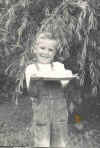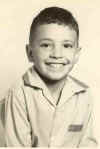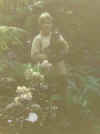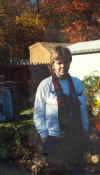| www.JesseYoder.com | www.FlowResearch.com |
welcome to
The Story of Jesse
Photo Timeline
| The Story of Jesse - The Early Years (1) Photo Timeline (1) | ||||||
| The Story of Jesse - The Early Years (2) Photo Timeline (2) | ||||||
| The Story of Jesse - The Early Years (3) Photo Timeline (3) | ||||||
| The Story of Jesse - The Early Years (4) Photo Timeline (4) | ||||||
| The Story of Jesse - The Middle Years Photo Timeline (5) | ||||||
| The Story of Jesse - Marriage to Vicki Photo Timeline (6) | ||||||
| The Story of Jesse - Friends Photo Timeline (7) | ||||||
| Feel Like You're Twenty Again! | ||||||
| Sink or Swim - An Autobiography in Verse | ||||||
| Self-Expression - Essays and Poems | ||||||
|
How to Become an Integrated Person |
||||||
This
compartmentalization can lead to a feeling of being fragmented, and to
potential conflict. As one of my friends put it recently, "I often
have to decide whether to stay at work and finish a report, or go to my
kid's soccer game. It shouldn't be like this." In addition, the lack
of intersection of the different compartments means that we have to live
by one set of rules at work, and another set at home, for example. This
can lead to confusion when both compartments are making time demands.
The article proposes a solution to this problem. By finding ways to draw connections among the different areas of your life, you can reduce the amount of compartmentalization in your experience. Perhaps you can bring a spouse to a work event, or invite someone from work home for dinner. Invite all your friends to one big party, so they can get to know each other. Find people at work who have similar interests, and plan activities with them.
Another way that people can experience fragmentation is by failing to connect past experiences and people with the present. It's easy to just focus on the present, given the time demands that many people find themselves under. But what you are today is the result of thousands of choices you have made in the past. You have also met or learned to know hundreds or thousands of people during your lifetime. These people have helped shape who you are today. By remembering them, and understanding how they are connected to your life today, you will become a more complete person with a better understanding of yourself.
The article gives a number of techniques for integrating past experiences into your life today. These include listening to music from the past, looking at old and recent photographs, and wearing old clothes. It also advocates that you write out descriptions of your experiences. Most importantly, it suggests writing out your own autobiography by creating an Experience Timeline, beginning from age 0 through today. By doing this, you will connect the dots of your experience, and become an integrated person.
Besides writing out an Experience Timeline, a Photo Timeline of your life is a very effective way of connecting the dots of your past experiences. Each photograph represents a small network of experiences. Just looking at a photo awakens the parts of your brain connected with these experiences. A Photo Timeline brings a different dimension of experience. Pictures are so much more powerful than words, which is why people say that a picture is worth a thousand words. A Photo Timeline can also serve to decompartmentalize your life because it puts the different compartments on display together. Now you can draw connections among them.
Here you will find a Photo Timeline of my life. While still a work in progress, I am hoping that it illustrates an important concept. I have divided the photos into different groups or compartments. In looking back at these photos, I have already come to realize that have been a lot happier most of my life than I had realized. I am also having the joy of remembering some of the most truly wonderful experiences I've had.
For a more complete understanding of what is involved here, I encourage you to read Feel Like You're Twenty Again. If you find the idea of interest, you may want to create your own Experience Timeline and Photo Timeline. The Photo Timeline can be done in hardcopy album form, using an album for each category of experience, or it can be done online, like this one. If you create an online version, you will probably need a good scanner, unless you already have your photos in digital format. It takes some time, but I guarantee that you'll find the results worthwhile. One advantage of the online version is that you can easily share your Photo Timeline with friends around the world, if you copy it to your website.
All photos are thumbnails. Click on a photo to see the larger version. I hope you enjoy the photos!
Jesse Yoder
October 2003













